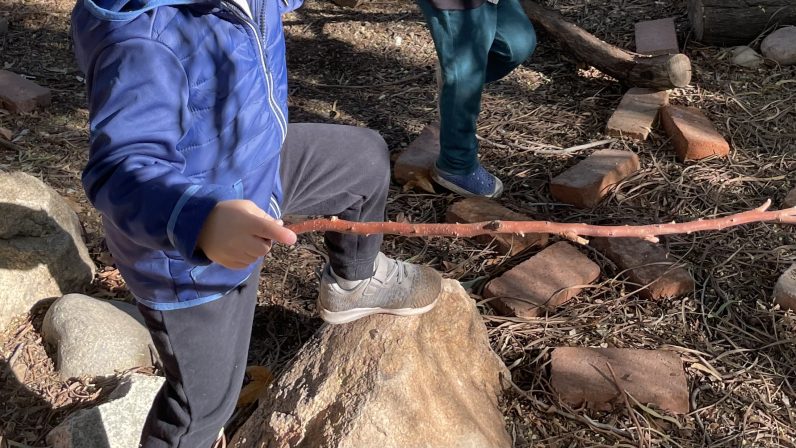From time to time, situations arise that force us to reflect on our practices and policies. We use these situations to refine what we do, driven by what’s best for children, what’s safe, and what works in a school setting. Such is the case of sticks and roughhousing.
Sticks have always been a part of the Seed curriculum. They are a part of nature and have considerable value for imaginative play. “The Importance of Stick Play” mentions the following benefits of stick play:
• sparks children’s imaginations
• develops gross and fine motor skills
• grows awareness of others’ personal space
• cultivates self-control
Of course, there are safety issues with sticks and young children, depending on how they are used. Over the years, we’ve taught our students how to use them, and made rules, such as “walking feet if you have a stick in your hand.” We do not permit students to use sticks as pretend weapons, and toddler students are prohibited from using sticks at all. We are still in the process of refining our relationship to sticks, always with the intention of maximizing safety and imaginative play.
Roughhousing, loosely referred to at a recent staff meeting as “physical contact through big touch,” is also a focus of our attention, based on ongoing playground activity. As with sticks, we allow children to experience big touch physical play, and step in when it appears to be crossing a line into being overly aggressive. Articles such as “The Playful Parent’s Guide to Roughhousing” present a strong case for the benefits of this type of activity. Among the positive outcomes of roughhousing are:
• stimulates neuro-chemicals that promote brain growth
• emotional regulation
• builds connections with others (bonding)
• brain releases oxytocin, the hormone that creates warm, loving feelings
• strengthens body awareness
• develops sense of boundaries with others
• physically and emotionally stimulating
Keeping these benefits in mind, we also need to consider the differences in how this kind of play can be allowed in a school setting vs. at home. We need to take into account what type of big physical activities children are comfortable with at home (e.g. some may have older siblings who play a certain way), and what parent preferences are as far as the kind of experiences they want for their child. School is a larger, more complex environment that requires systems and rules for safety to keep everyone protected. At school we are always navigating the balance between affordable risks and personal safety.
What we’re working on right now is an agreement on how we’ll continue monitoring these activities. We’re in the process of drafting a plan for supervision and safety that will also support children’s imaginative and physical play. The plan will include close observation, strong communication among staff, and alternative activities that will safely fulfill the needs of students who choose big physical activities as well as those including sticks. We’ll also work in important lessons about consent.
These past few years have placed limits on children that have infringed upon their natural needs and development. Our intention is to keep carving out a space where they can fully experience their needs, through their bodies and minds, knowing they are safe and supported along the way.

